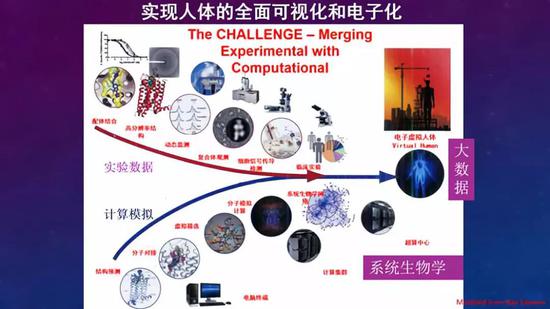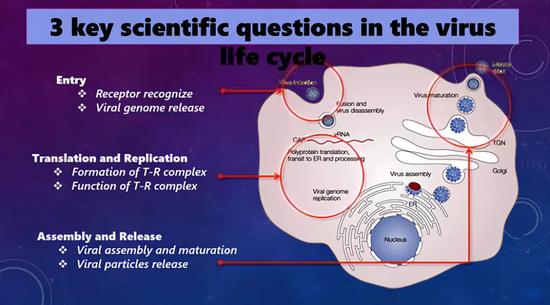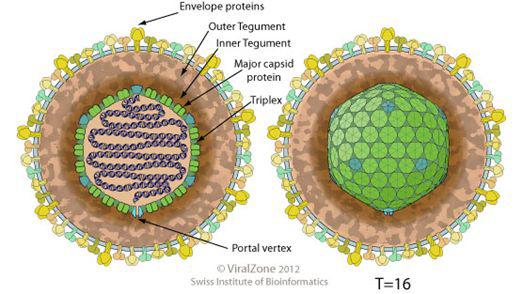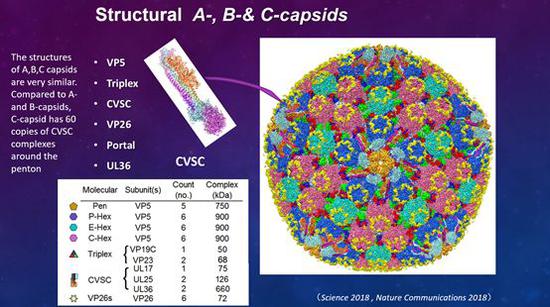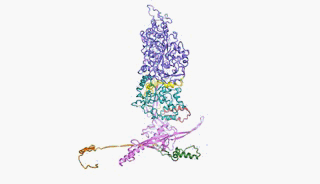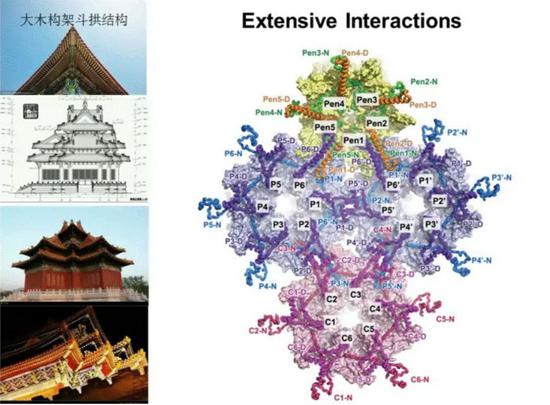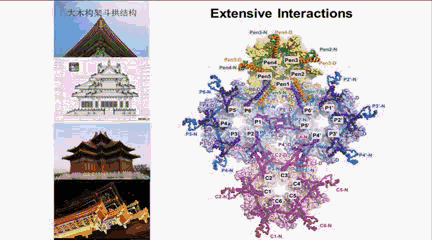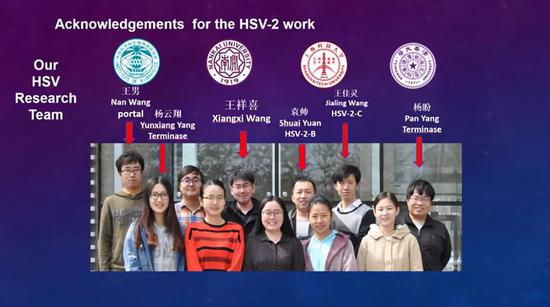Difficult virus: how to copy and regenerate after entering the human body
Author | Raozi and Structural Biology, Academician of Chinese Academy of Sciences, former President of Nankai University, former Director of Institute of Biophysics, Chinese Academy of Sciences, Professor of Tsinghua University Life has a broad scale of time and space. From the time dimension, it must take a moment to pass the atomic reaction of the femtosecond (fs) scale (1fs=10^-15s), to the life of a hundred years, spanning dozens of orders of magnitude. From the spatial dimension, from the atomic size Å (1 Å = 10 ^ -10 m) to the average height of the human body one meter seven, we are on the path of exploration approaching the limits of cognitive scale. As a researcher in structural biology, we hope to glimpse the mysteries of life from the microscopic atomic level to the macroscopic individual scale, and it will be accompanied by countless thorns and challenges. Regardless of the detection of molecules, cells and individual structures, advanced methods and techniques are needed. The close cooperation between biology and physics, chemistry, computer, engineering and other interdisciplinary subjects has broken through the existing bottlenecks, ushered in the development of structural biology, and answered many long-standing scientific problems. The experimental data, in the past computer simulation of it, and now there is artificial intelligence or big data system, I hope that one day can be used for electronic virtual human body, which is the general direction of the entire structural biology. The general direction of structural biology: the realization of electronic virtual human body The research team I led did a relatively small scale, including research on viral pathogens and new recurrent infectious disease pathogens. Our research team mainly conducts research in this field. Our team is very young. The results of the research team in 2018 have been blown out, including 2 Science, a collaboration with Professor Xu Wenqing, and a Cell article just published online in 19 years. These efforts have accumulated for a long time, and it happened to be published last year. These achievements belong to these young people. The virus has three scientific problems: The first scientific question is how the pathogen represented by the virus can recognize and interact with the receptor of the host cell and then invade the host cell. The second scientific issue is transcription and replication. The virus enters the host cell, releases its genome into the host cell, integrates the viral genome with the host genome, and then transcribes it. This work began with the SARS epidemic and conducted in-depth research with the coronavirus as the research system. The third question is how to assemble a virus to form a virus particle after it is transcribed and replicated in the host cell, and then how to release it? I am going to tell you the third question today, how is the virus assembled after transcription? Taking herpes virus as an example, in the past ten years, our laboratory has analyzed the atomic level structure of twenty or thirty intact viruses, not only the structure of viruses, but also the structure of viruses and receptor complexes, complexes of viruses and antibodies. structure. These structures allow us to have a certain understanding of the mechanism of action of the virus at the atomic level, and provide a solid structural basis for further research on its mechanism of action and drug development. So, what kind of structure is the capsid of herpes virus? What is its Architecture? Everyone knows herpes virus, chickenpox, oral herpes, and herpes zoster, which are troublesome viruses that are closely related to people's lives. There are two states of the virus, one is called the lysis phase, and the other is called the incubation period. After the virus invades the human body, both of these states are present. When the immune system regulates the problem, the herpes grows on the mouth or other parts of the body. This is the active period. When the state is good, it will disappear. This is the incubation period. Because it will lurk, it is difficult to cure. After people have a herpes virus, it may be with you for a lifetime. Many international research groups are studying a wide range of herpes viruses. The herpes virus research team is very large, but there is no cure for herpes. Herpes virus is special in terms of structure, it is particularly large and has a diameter of more than 200 nanometers. The structure has four layers. As shown below: The outer layer is a capsule with glycoprotein. The second layer is the protein layer, called Tegument, which has Outer Tegument (external) and Inner Tegument (internal), which is quite complicated. The third layer, the green color is a relatively uniform icosahedron, there is a channel, this channel is called Portal, is the place where the genome enters and leaves. In principle, the herpes virus is not a strict icosahedron, but a The icosahedron of the mouth of the bottle. The fourth layer is the double-stranded DNA genome. In the past 6 years, due to the breakthrough of cryo-electron microscopy technology, people can analyze many complex structures that could not be solved at the atomic level. You can see this series of structures until the structure of Dengue Virus is in such a large structure. Analyzed at the atomic level. But a virus as big as herpes virus, due to the limitations of electron microscopy technology, there is no way to do it. Our research team improved the calculation method and finally solved the first such large size herpes virus atomic resolution structure. This work last year. Published in Science in April. The herpes virus was cultured and isolated and purified. Three kinds of granules were found. One kind of granule is called A granule. It is empty, there is no genome inside, B granule is empty, and there is no genome, but there is a little scaffold protein in it. C particles are truly infectious, with intact genome particles. In terms of size, the three particles A, B, and C are almost the same. The difference is that there is no genome inside, and the C particles have an important complex on the surface. We analyzed the structure of the three particles A, B, and C by cryo-electron microscopy. Through the alignment and analysis of the structure, the A and B particle capsid layers are similar in structure, and the C particles contain an ordered array of genomes, in addition to the C particles. The CVSC complex is incorporated near the fifth axis. B particles, there is a special channel called Portal, there is no genome inside, the channel is like a bottle, the inside is empty, not closed; C particles are full of genome, the portal is closed by UL25. We have analyzed the B-type particle structure, which is a structure of an icosahedron, a large sphere composed of more than 4,000 protein subunits, and a C copy of a C-fold CVSC complex. As shown below. How do these more than 4,000 protein subunits are assembled in an efficient and orderly manner? Mainly rely on VP5 protein. The VP5 protein has more than 1000 amino acid residues and is assembled into a stable nucleocapsid structure mainly through the change of the structural conformation of the lower part. The nucleocapsid structure consists mainly of two hands (domain), this red-labeled structure. The domain is called N-lasso, and the green-labeled domain is called the dimerization domain. In order to pack the protein into a nucleocapsid, the two hands changed significantly to accommodate the differences in the local assembly microenvironment, and assembled into an approximately icosahedral structure with little change in the upper domain. The structure below is a bit like the building of the Forbidden City turret, called the large wooden frame arch structure. It is actually the bottom of the ball, which is made up of these structures. This is a pentameric, hexamer, which is a C-type hexamer. How is it constructed between them? First look at how the pentamers are constructed, then how the hexamers are constructed, then how the pentamers and hexamers are constructed, and then the structure between the hexamers and hexamers. How? Then analyze how the three hexamers are constructed. Look at the bottom of the VP5 how to grasp the two hands, and then look at other details, this is the structure between the pentamers, side by side to see the β-fold like a boat, and then the structure between the hexamer, That's why it's architecture, it's really like a 4,000-unit house. Two parallel alpha helices between the pentamer and the hexamer, the whole row down, and then looking sideways, this structure is very fine, the structure between the hexamer and the hexamer, in addition to this one Heap α—helix cluster (α helix cluster), and symmetrical β-fold, then see how the three hexamers are combined. In fact, a metrimer can be placed in the middle hole. Going back to the bottle, it is difficult to see the structure of the virus mouth. It only accounts for less than 1% of the entire virus sphere. It is very challenging to solve its atomic level structure. Because it has no symmetry, the challenge is very large. Regardless, we parsed this structure using the method of Asymmetric Reconstructions. How is this method done? This is a very detailed matter, and I will not explain it here. According to the analytical structure as a drug target, antiviral drugs can be designed. Since the data has not been published, the analysis process will not be mentioned first. This work was done by a group of young students. Dr. Wang Xiangxi was the leader. Yuan Shuai analyzed B particles and Wang Jialing analyzed C particles. Yang Yunxiang and Yang Pan analyzed the end enzymes, and Wang Nan analyzed the Portal. These are all doctoral students. Note: The article is organized in Rao Zi and the speech at Mozi Salon, slightly cut down. Source: Science everyone Ostomy Bags Accessories,Ostomy Bag Accessories,Colostomy Bag Accessories,Stoma Bag Accessories Henan Maidingkang Medical Technology Co.,Ltd , https://www.mdkmedicales.com